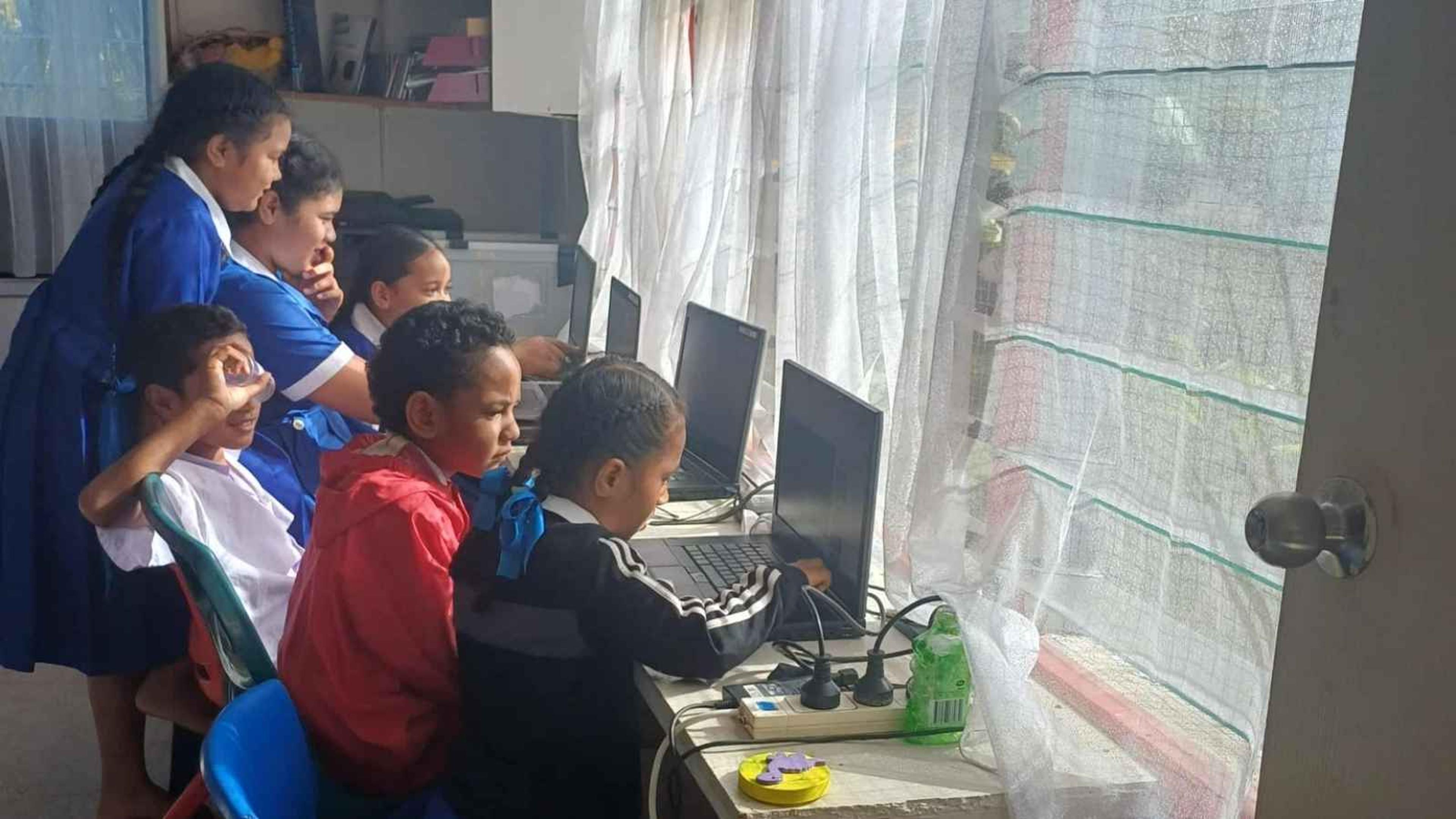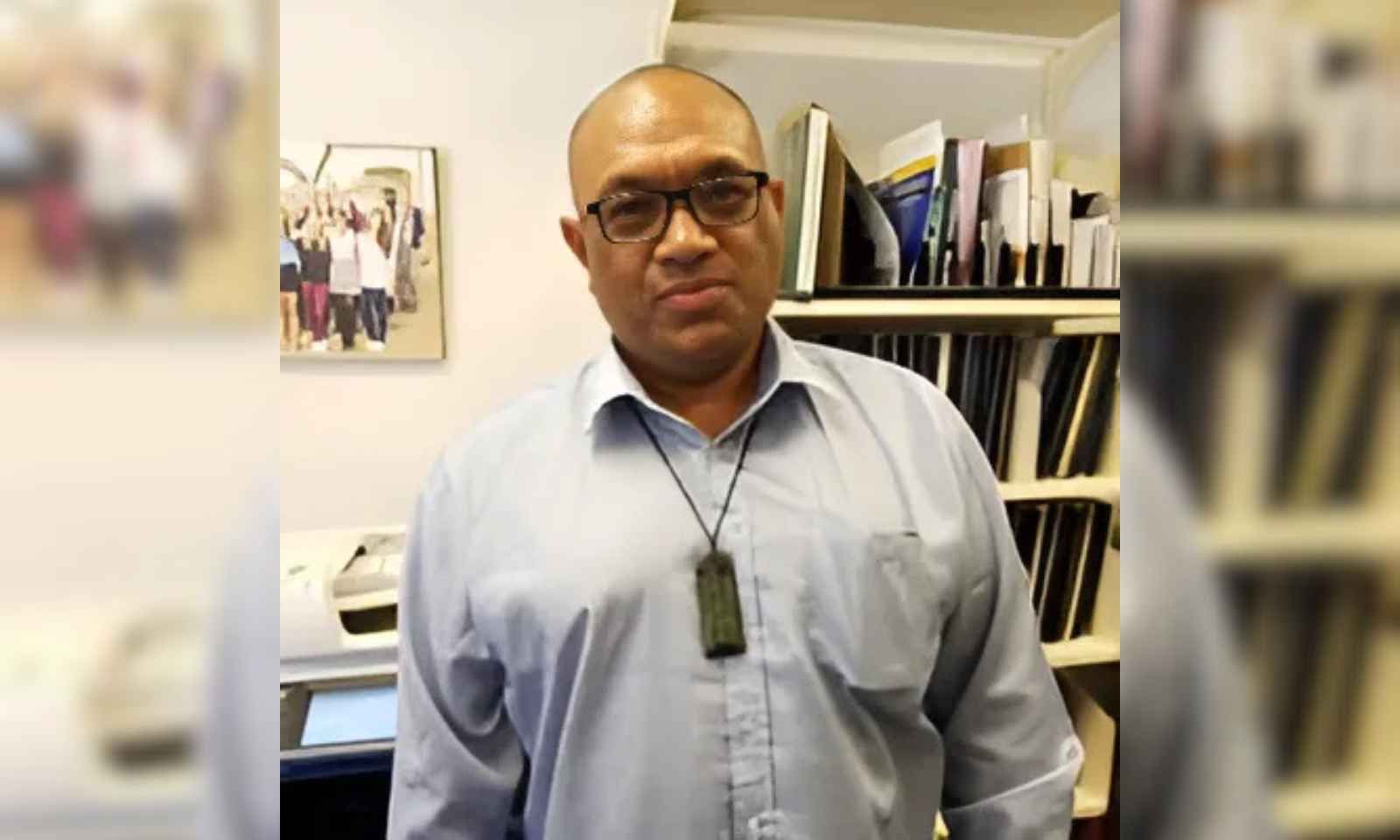

Access to specialist mental health and addiction services has decreased by 16,000 people in the last four years.
Photo/Supplied
Expert calls for urgent change in Pacific mental health
Dr Sione Vaka, Associate Professor at the University of Waikato, says Pacific communities face ongoing barriers to mental healthcare.


Tonga makes historic breakthrough at Oceania Youth Chess Championship

‘A Library for the Heart of Tonga’: Building a hub for Nuku’alofa

Mental health targets risk hiding Pacific people in crisis, expert

‘I knew something was wrong’: Pacific children miss out on early hearing support

Tonga makes historic breakthrough at Oceania Youth Chess Championship

‘A Library for the Heart of Tonga’: Building a hub for Nuku’alofa

Mental health targets risk hiding Pacific people in crisis, expert
A Pacific academic has raised concerns about the lack of ethnic-specific data in the latest mental health report, warning that Pacific people continue to face barriers to accessing care.
Dr Sione Vaka, Associate Dean, Pacific, at Waikato University, provides his insight into the recent data revealed by Te Hiringa Mahara-Mental Health and Wellbeing Commission.
“My concern is if that’s the access of the general population, it didn’t really talk about the percentage of Pacific people,” Vaka says.
“Research before has revealed that Pacific people have had low access to mental health services anyway.”
The data reveals that 16,000 fewer people have accessed specialist mental health services in the past four years and 10,000 fewer younger people under the age of 25 are receiving specialist care since 2020/21.
When designing solutions specifically for Pacific people, Vaka stresses the importance of acknowledging the differences among different ethnicities.
“If we want to improve things, we need to start acknowledging those ethnicities and address diversity and things as well, so people can come to the mental health services.
“We also need to integrate much more of our cultural values and worldviews into the current system because, at the moment, we don't see it as accommodating our needs.”
For Pacific communities, the amount of people accessing specialist services has not changed over the past five years.

Dr Sione Vaka is a senior lecturer at Auckland University of Technology and a Nurse Lead Pacific at Counties Manukau Health. Photo/Sione Vaka LinkedIn
But data from the New Zealand Health survey released last November reveals people experiencing higher levels of psychological distress have risen to 13 per cent in 2023/24.
This was even higher for Pacific people at 20 per cent, young people at 22.9 per cent, and Māori at 19.5 per cent.
A ‘mixed picture’ of mental health care
Karen Osbourne, chief executive of Te Hiringa Mahara, highlights multiple factors contributing to the downward trend in access, including increased distress post-Covid, workforce shortages, and a growing complexity of needs.
“It's a really mixed picture,” Osbourne says. “What we're seeing is the increased levels of need within the community - particularly for our rangatahi and young people.
“So we know the rates of mental distress were rising amongst our young people pre-Covid and it's been exacerbated as a result of Covid.
“We're seeing increased rates of distress and more people accessing mental health and addiction services and the primary and community services.

Karen Osbourne was Director of Health Quality Improvement and Deputy Chief Executive at the Health Quality and Safety Commission. Photo/Te Hiringa Mahara
“We are seeing there are barriers to accessing specialist mental health and addiction services… when people do access those services, they have a high level of need.”
Osbourne adds people may have more than one factor they are presenting with.
“It might be around distress, it might be other factors, socioeconomic factors, might be related to alcohol and other drugs - there's a range of factors there.”
She adds that there are very real challenges around the specialist workforce, such as psychiatrists, psychologists, and specialist nurses.
Despite a growing mental health workforce, vacancies continue to rise, and many experienced professionals are leaving, leading to gaps in care.
“This means that particularly if those are experienced people, then other members of the team need to pick up that sort of the caseload or the workload of that particular person, perhaps provide a greater level of supervision for somebody who's newer to the work, to that particular type of work,” Osbourne says.
“We're seeing that happen as well as those vacancies, increasing intensity of the work. And of course, we've seen the impacts of Covid on the workforce as well.”
Pacific mental health: Services lag as distress rises
Vaka believes the current mental health system is not culturally accommodating, reinforcing barriers for Pacific communities.
He also points to the dominance of the biomedical and clinical approach in mental health services, which fails to align with Pacific ways of healing.
“What I see a lot is the stigma and the discrimination Pacific people are scared of when it comes to accessing help.
“The other thing as well is the domination of the biomedical and clinical perspective of things as well.
“Pacific people will see a service that integrates our cultures, how we define mental illness and incorporate spiritual interventions into the current system - our people will then be more likely to rely on those services.”
Vaka is direct when asked if the Government is doing enough to address mental health disparities: “They're doing something, but I don't think it's enough.”
A system under strain: What needs to change?
Osbourne says there is more to be done to address the crisis.
“There does need to be more done, particularly a focus on improving access to specialist services and for our rangatahi and youth, where we've seen that bigger drop and given we know young people are experiencing higher rates of distress.
“We think there does need to be more focus in that area and it is about getting the right people around the table.
“It is about people providing services. It is about those specialist staff. It is about people using services, in particular young people, to really understand what the particular barriers are and issues and how some solutions come to be.
“It does need some really focused effort.”
Leadership and uncertainty in the Health sector
With a new health minister and multiple senior resignations at Te Whatu Ora, Osbourne acknowledges that leadership changes bring challenges.
“It's always challenging, and these are big, complex problems that aren't going to be solved quickly,” she says.
“It does need that sort of leadership to really lead and drive addressing these issues forward. Health New Zealand, in particular, is a very large organisation.”
Vaka agrees the system is slow in adapting culturally appropriate mental health solutions.
“When you look at the findings, we are just rephrasing. If we want to improve things, we need to overhaul the whole system. They are welcoming our cultural perspectives but it’s not really strong.
“The last report, the mental health inquiry one - our people spoke and they said that the current system is quite cohesive, very clinical, very cold.
“I don't think there's any improvement on that one and we are going backward as well from here. We need to change and make sure our people see themselves within the mental health services. But at the moment, they do not.”
Vaka credits successful Pacific mental health programmes such as Pacific Dementia Māngalo, which provides comprehensive support and care for Pacific dementia patients and their carers.
The programme is a subsidiary of the Aotearoa Tongan Health Workers Association Incorporated and offers a range of services tailored to patients' specific needs.
What’s next?
Te Hiringa Mahara-Mental Health and Wellbeing Commission will release further reports soon.
Osbourne stresses that while statistics provide important insights, human impact must remain at the forefront.
“We've got a report into the Access and Choice programme, which was a response to the Government’s inquiry into mental health and addiction, and that's at the five-year mark.
“We'll be releasing a report in early April reporting on the rollout of that programme, including those specific services and also youth, kaupapa Māori and general sort of primary health-related services.
“Then we've got a broader range of information relating to access that will come out probably around Mayand will include looking at waiting times and workforce and investment in services. Then there's another couple of reports in June.
“I think the key message is that when we're looking at these numbers of people, and they are some large numbers, each of those people are people are experiencing distress.
“We just need to keep that front in mind and do what we can to address this issue in a really sort of timely way.”